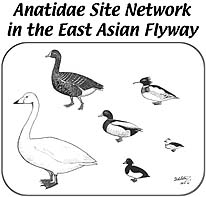
Activities in the Network Sites
Lena-Delta
Dr. Vladimir Pozdnyakov
Lena-Nordenskiold Biological Station
[ in Japanese ] [ Back ]
[ What's New ] |
[ Site Network ] |
[ Action Plan ] |
[ Links ] |
[ Atlas ] |
[ Sitemap ] |
[ Japanese pages ] |
[ Network Sites ] |
[ Activities ] |
[ Introduction ] |
[ Contacts ] |
|
|
Activities in the Network Sites Lena-DeltaDr. Vladimir Pozdnyakov [ in Japanese ] [ Back ] |
|
In 1985 the part of the delta (13.00 km2) was included in the State Nature Reserve "Ust-Lensky" of Russian Federation. In this territory any economic activity is forbidden. In 1996 the Government of Sakha Republic (Yakutia) included the rest-unprotected territory of the delta in the structure of Resource Reservation "Lena-Delta". In this territory only traditional economic activity of the indigenous is permitted. In 1995 with financing of the Government of Yakutia and WWF Sweden the International Biological Station "Lena-Nordenskiold" (IBS) has been build and inaugurated here.
|
||
|
|
||||||
|
Anet Newsletter No.2, page 5-6 (November 2002) |
||||||||||||||||||||||||||||||||||||||||||||||||||||||||||||||||||||||||||||||||||||||||||||||||
|
[ Top ] [ in Japanese ] [ Back ]
[ Network Sites ] |
[ Activities ] |
[ Introduction ] |
[ Contacts ] |
[ What's New ] |
[ Site Network ] |
[ Action Plan ] |
[ Links ] |
[ Atlas ] |
[ Sitemap ] |
[ Japanese pages ] |